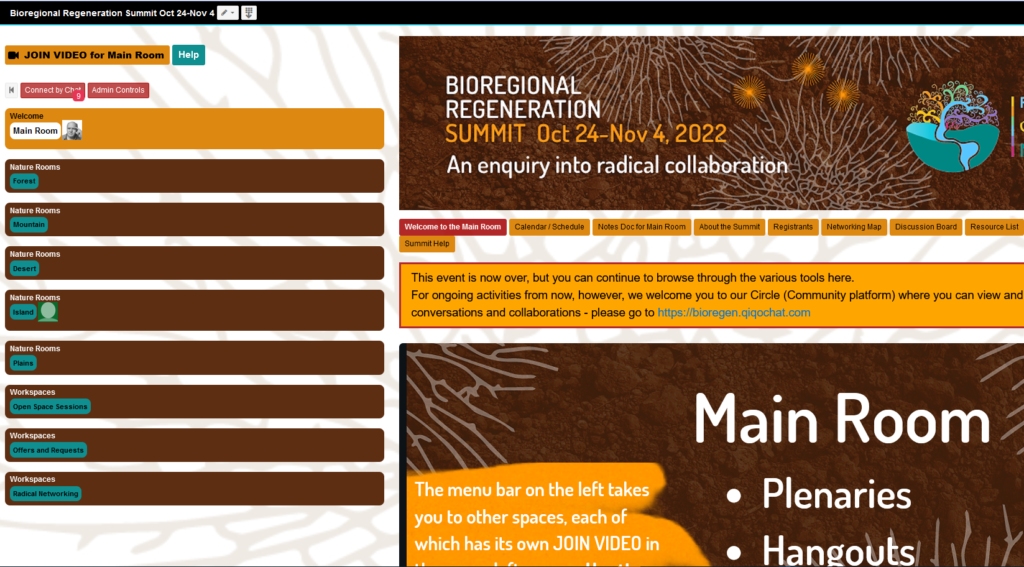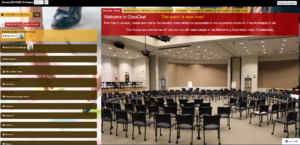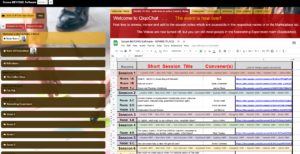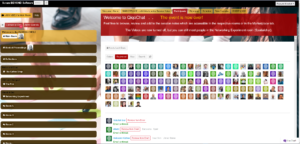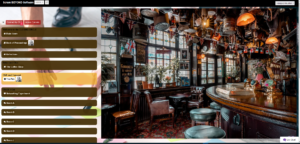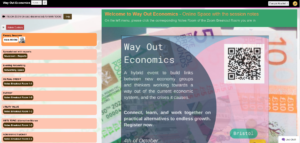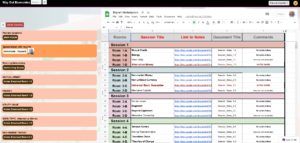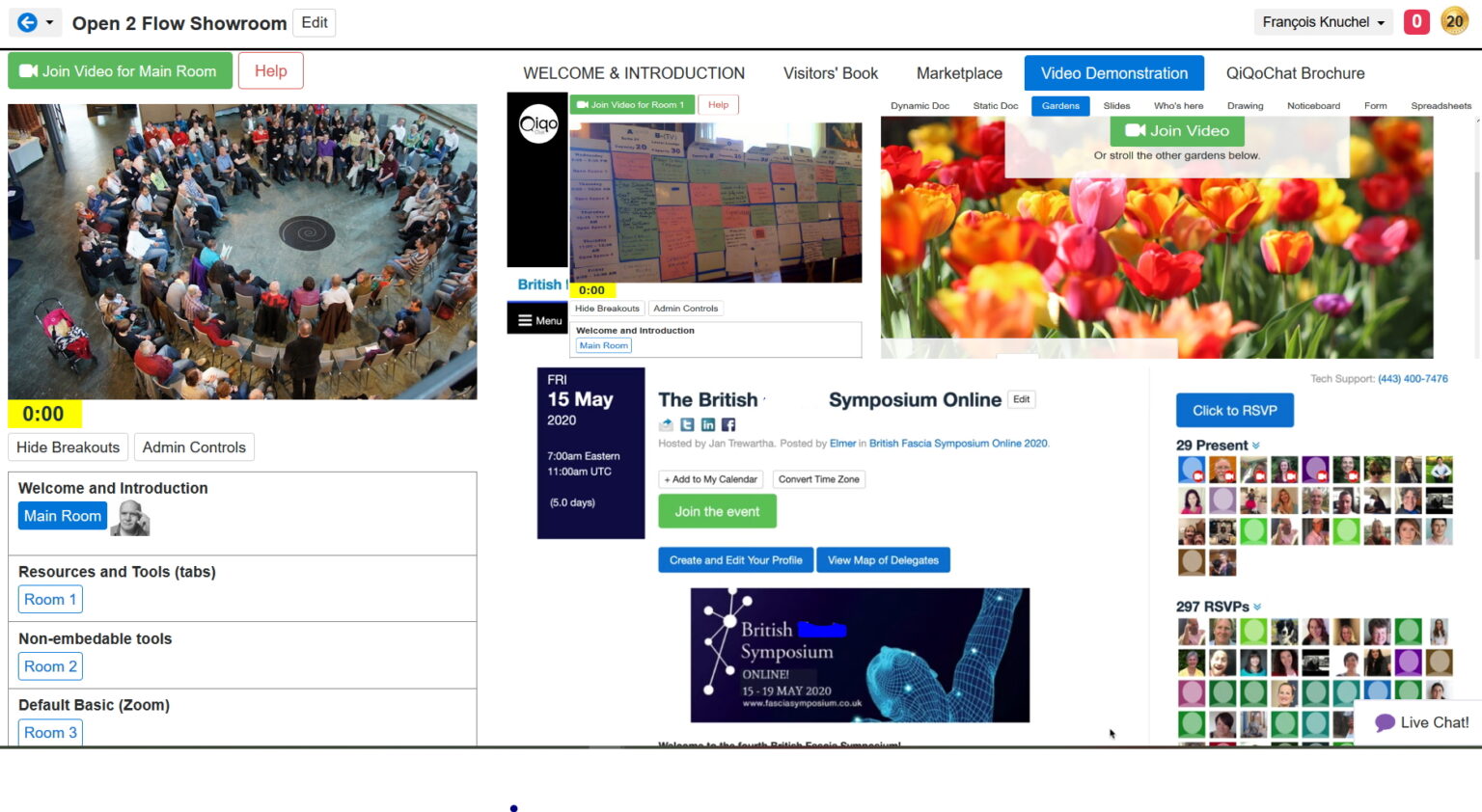Designing and Producing high-engagement Hybrid Conferences
How to run large (100+) participatory events which are hybrid
During the pandemic events (conferences, summits, symposia, meetups, gatherings) shifted from being in-situ (in the same physical space) to online. This was not only a shift of medium but also a shift of various other factors as well, such as who could participate, frequency, cost, levels of collaboration and so on. While there are many downsides to online conferences, such as lack of physical proximity and context, attention span, lack of kinesthetics, screen fatigue and so on, there were many unexpected upsides too, such as people who previously could not participate in the same event (due to geographic location, cost, or availability) suddenly found they could, or because of lower costs more people could be involved. Online collaboration also became a lot easier due to the many simultaneous collaboration tools (Googledocs, Miro, Mural, Trello, QiqoChat, etc.) available.
It is no wonder, then, that after Covid people don’t simply want to return to the previous way of running events, but rather would like to incorporate all the new benefits they experienced during the pandemic, such as reduced travel time, wider spread of perspectives, live collaboration tools etc. Consequently, the demand for hybrid conferences has grown enormously. Which is a lot more easily said than done.
Running broadcast (one to many) types of hybrid conferences, which are driven by speeches/presentations, or panel discussions with limited participant engagement (such as Q&A or brief expression of opinion through a moderator) is less difficult to do, indeed broadcasting companies have been doing that for the last 50 years. Running larger high engagement participatory (many to many) conferences, on the other hand, i.e. events which are centred around the participants self-organising in smaller groups with cross-functional serendipitous pollination of ideas, without central figures of attention (presenters, moderators, celebrities etc), are substantially more difficult and costly to do it in hybrid form. This article concentrates on this latter type of participative many-to-many event, like Open Space, of over 100 participants.
Online Open Space Unconferences (Open Space Technology) have opened up a whole new range of possibilities, especially in the realm of international collaboration or cross-sharing, as well as around issues which are deemed complex. With online voice recognition, transcription and automatic translation, global gatherings are now possible and relatively cheap to run online. This means people can rally behind certain issues both locally, in locally organised meetups or conferences, as well as cross-share local hub experiences and know-how in mega global Open Space conferences online. Open Space is the penultimate form of participatory, large-scale event, but there are other large group interventions (World Cafe, Appreciative Enquiry etc) which have a similarly high degree of participation and intermingling – penultimate because Open Space is the only form where the session agenda is 100% determined by the participants themselves there and then in the moment in a ‘marketplace’ around an overall theme. Precisely because of this lack of a pre-planned (pre-conceived) agenda, Open Space is ideal for complex issues, in contrast to more traditional conferences centred around expertise.
As we become more aware of complexity and the need for holistic approaches to tackle the various issues and crises our global societies are facing, so the demand for online Open Space will increase, where cross-disciplinary multi-perspectivity is paramount. We know how to do this in situ with hundreds of participants in the same location; and we know now know how to do this globally online too. The question is, how do we do this ‘hybridly’, that is involving both an online component as well as an in-situ part (or possibly even several in-situ components simultaneously in dispersed located hubs)? That is the subject of this article.
The key word is participatory or high engagement. There have always been plenty of presenter/broadcast-based events, which are not participant-led, but rather celebrity-driven, with only limited, controlled engagement with the audience. These were never truly participatory in any shape or form. And yet now the demand for something more sophisticated (with real engagement, where participants can have a deeper say and can be heard) is growing across all sectors.
Participatory events normally involve a high use of breakouts – in-situ these are physical spaces or separate rooms for small group conversations, and online the breakouts or group facilities of the used video platform are applied for small group video conversations (e.g. Zoom breakouts). Whether in-situ or online, there is a high degree of self-organisation involved, which itself requires a lot of shifting around with people moving from group to group or plenary freely themselves. All fine when people are all in the same physical venue, or when they are all on the same Zoom call moving from breakout to breakout – but now try to intermix those two completely different worlds, and it becomes quite a different matter.
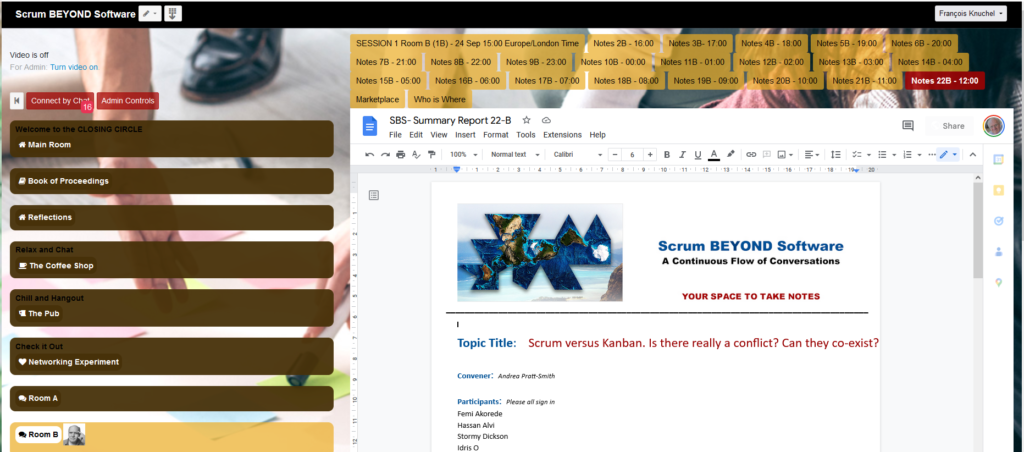
Large-scale participatory conferences which are hybrid are growing in demand. Yet most people are unaware of the complexities of trying to mix and intertwine fundamentally different worlds. Consequently simplistic so-called ‘hybrid solutions’ abound. And as a result, many hybrid events are pretty miserable, at least for most participants themselves. Does that mean we shouldn’t do them?
Well yes and no.
- Yes: We can run hybrid conferences, but a lot more attention and resources need to be given to make them engaging and meaningful – that’s the subject of this article
- No: We shouldn’t run hybrid events on the cuff, flippantly, they are very difficult and costly to orchestrate and run well, i.e. where all participants have an enriching, even life-changing experience.
Most conferences, even before hybrid, and even before online, were pretty morbid and miserable from an engagement point of view. Yes, some are very flashy, some are entertaining, and some are indeed very interesting, but very few are transformational, with genuine cross-functional serendipitous exchange, which really comes from the dialogue and interchange between participants themselves. So, if conferences, whether in-situ or online, were poor from participants’ perspective to begin with, then there is no way hybrid is going to make them any better – on the contrary, it can only make matters worse.
Therefore, as a principle, avoid hybrid conferences if at all possible unless you know what you are doing. One precondition is that you know how to run participatory events well in situ, and that you can also do so online too, because if you can’t get either of those right separately, then any hybrid attempt will be futile – you are certainly not going to get better results in hybrid mode. Consider all other options first. But if there is no alternative, then make sure you do it properly.
We can help you work this out. For more details on designing participatory hybrid events please continue to read the full article here. Or, we can help you design, produce and facilitate your hybrid or semi-hybrid event(s) – please contact us.


